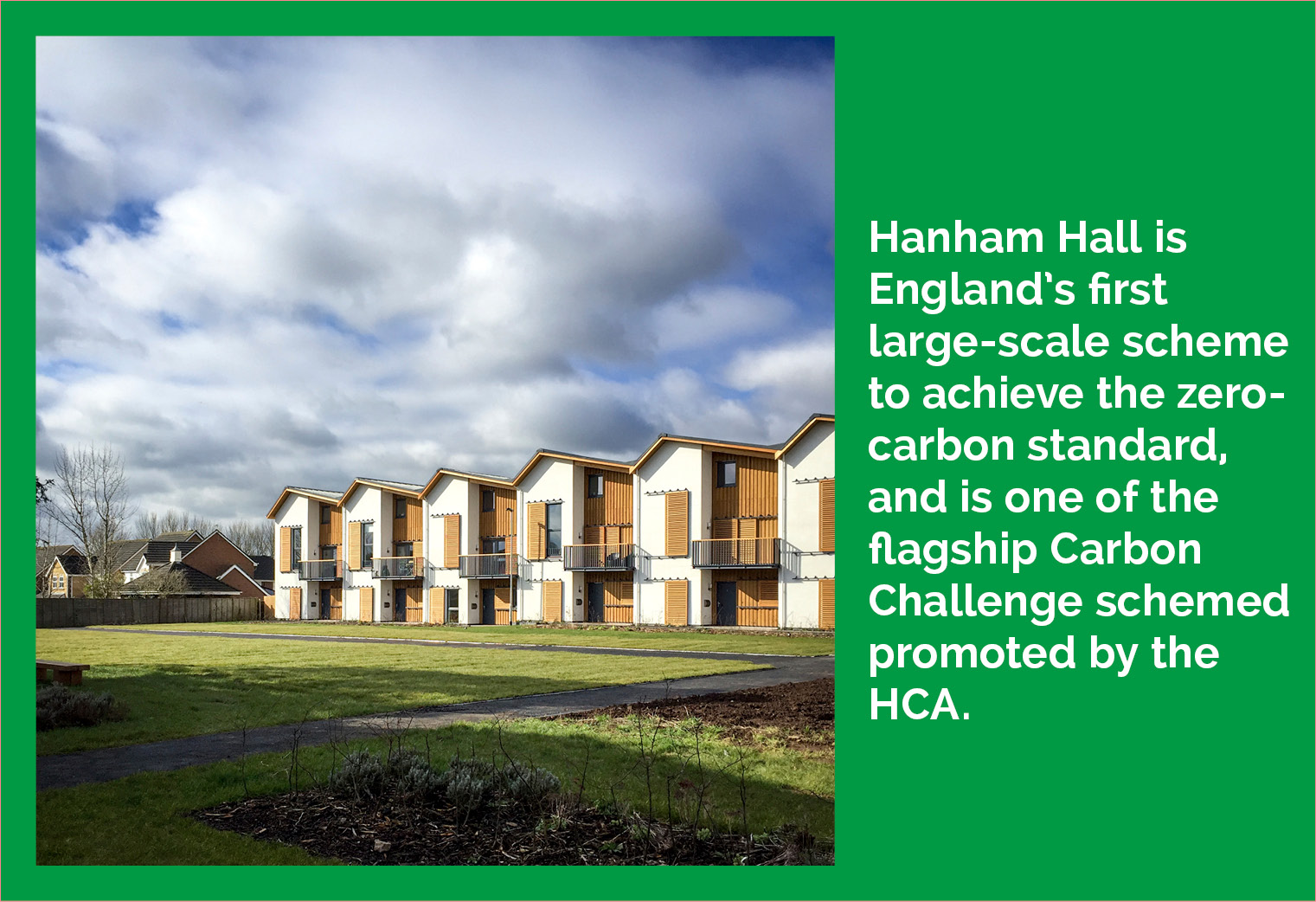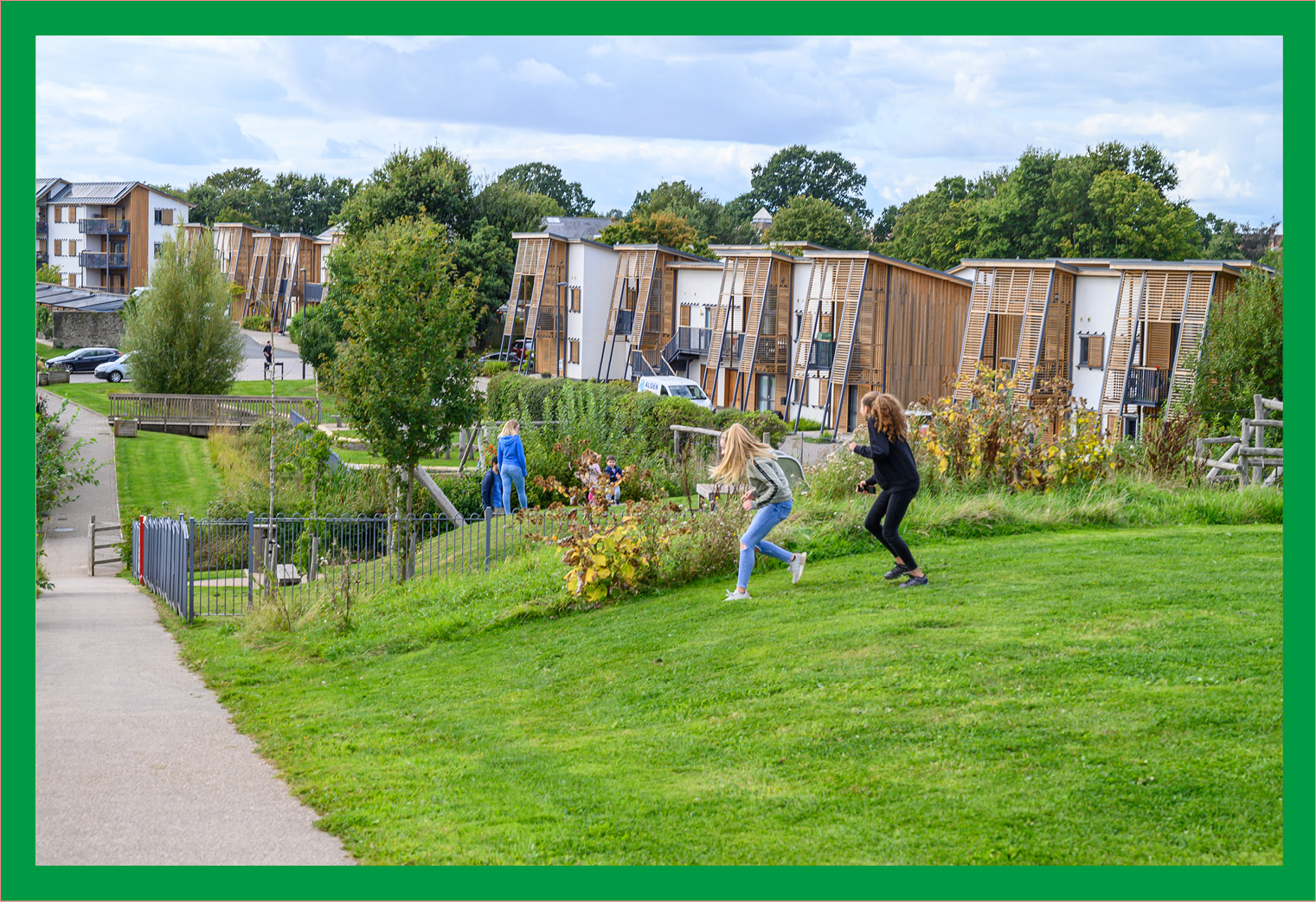HTA@50 - Hanham Hall
In the Spring of 2007 the Government of the day through English Partnerships, now Homes England, launched the Carbon Challenge to housebuilders. The aim was to develop the skills and technologies to deliver homes to Level 6 of the Code for Sustainable Homes, the highest level, as well as addressing design quality, access, delivery and management.
HTA had expertise from the Design for Manufacture program working with Barratt on two sites. This had refined innovations made at Oakridge in Basingstoke which itself had developed ideas originated with house type designs for Peabody and had been refined for Greenwich Millennium Village. Barratt and HTA once again teamed up for the Carbon Challenge with engineering expertise from Arup for the initial competition winning entry to redevelop the former hospital site of Hanham Hall near Bristol then at the core of a larger team to secure planning approval before embarking on detailed design.
Bringing to one site HTA Architecture, Landscape, Sustainable Futures, Planning and Communications Design a fully integrated approach was developed closely with Barratt and their supply chain. Extensive design study was made into all aspects of the development. Placemaking strategies developed over the preceding decade guided the site layout that also maximise the passive heating and daylighting benefits of solar gain. The landscape design makes each character area a more cohesive place that integrates the buildings and setting and turned the Sustainable Urban Drainage System into a feature that enhances amenity. Allotments, play area, the wildflower meadow and the Apiary, which today yields some very popular Hanham Hall Honey, were carefully considered for their contribution to the place and the wellbeing of residents. The Grade II* listed Hanham Hall is an exceptional heritage asset to the site and its refurbishment to provide a creche, gym, café and offices brought commercial uses to the development offering a very short commute for some and securing the long-term future of the historic building. The homes were designed to minimise energy use through a fabric-first strategy and the spaces arranged for usefulness and variety, the houses provide large, bright and airy living space on the first floor that have proved popular and are constructed from timber SIPS off-site reducing construction times and promoting consistent quality to support the all-important air tightness of the fabric. Design of one of the most notable features, the solar shading to the front of the South facing houses, considered both how it performs and how it mediates between the interior and public space. One was even built to test its materials and construction.
HTA continued to be involved with monitoring and assessment of the performance of the designs finding energy use substantially lower than average, and Post Occupancy Evaluation has found a community has developed.
Hanham Hall demonstrates highly sustainable places can be achieved in large suburban housing developments.












